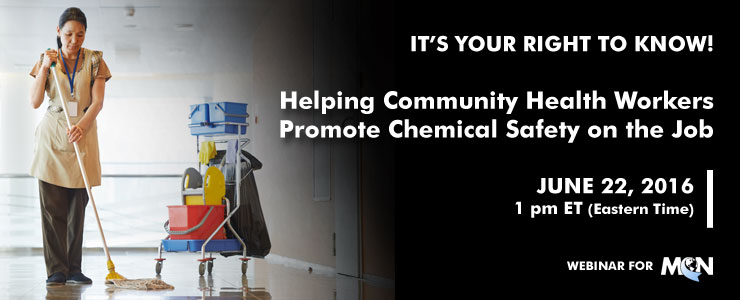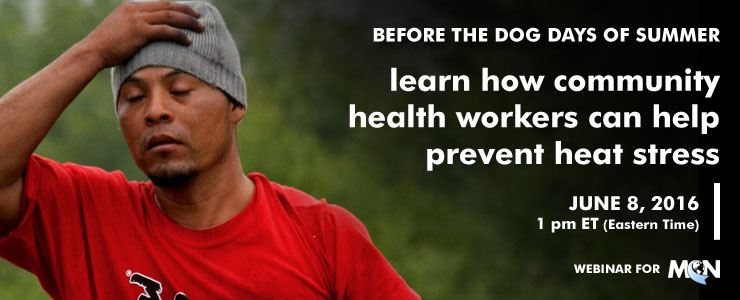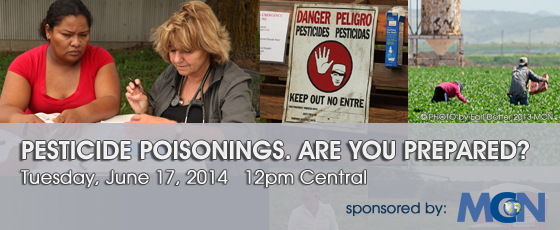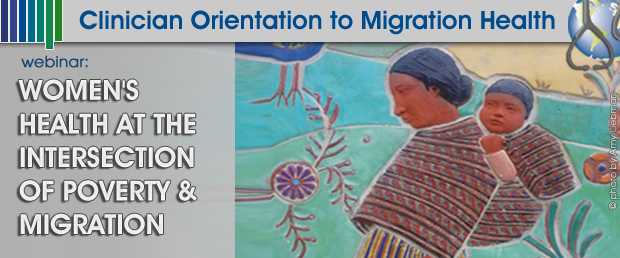This 90-minute webinar was created for physicians, nurses, and other health professionals who treat and case manage patients with active TB. The webinar introduced the 2016 Official American Thoracic Society/Centers for Disease Control and Prevention/Infectious Diseases Society of America Clinical Practice Guidelines: Treatment of Drug-Susceptible Tuberculosis. This training highlighted the guidelines development process, the key changes in recommendations, and discussed the evidence supporting the changes. The webinar was originally presented on November 4, 2016. This training was jointly sponsored by all 5 RTMCCs.
Diabetes HealthSense provides easy access to resources to help you live well and meet your goals—whether you have diabetes or are at risk for the disease. Available in English.
The 1999–2013 United States Cancer Statistics (USCS): Incidence and Mortality Web-based Report includes the official federal statistics on cancer incidence from registries that have high-quality data, and cancer mortality statistics. It is produced by the Centers for Disease Control and Prevention (CDC) and the National Cancer Institute (NCI). This report shows that in 2013, 1,536,119 Americans received a new diagnosis of invasive cancer, and 584,872 Americans died of this disease (these counts do not include in situ cancers or the more than 1 million cases of basal and squamous cell skin cancers diagnosed each year).
This year’s report features information on invasive cancer cases diagnosed during 2013, the most recent year of incidence data available, among residents of 49 states, six metropolitan areas, and the District of Columbia—geographic areas in which about 99% of the U.S. population resides. Incidence data are from CDC’s National Program of Cancer Registries (NPCR) and NCI’s Surveillance, Epidemiology, and End Results (SEER) Program. Data from population-based central cancer registries in these states and metropolitan areas meet the criteria for inclusion in this report.
The report also provides cancer mortality data collected and processed by CDC’s National Center for Health Statistics. Mortality statistics, based on records of deaths that occurred during 2013, are available for all 50 states and the District of Columbia.
The report also includes incidence rates and counts for Puerto Rico for 2009 through 2013 by sex and age, as well brain tumor and childhood cancer data.
USCS data are presented in the following applications—
- https://nccd.cdc.gov/uscs/?s_cid=govD_USCS2013_1
- http://links.govdelivery.com/track?type=click&enid=ZWFzPTEmbWFpbGluZ2lkPTIwMTYwNzA2LjYxMjE2OTcxJm1lc3NhZ2VpZD1NREItUFJELUJVTC0yMDE2MDcwNi42MTIxNjk3MSZkYXRhYmFzZWlkPTEwMDEmc2VyaWFsPTE3MDg5NzQwJmVtYWlsaWQ9dGx5b25zQG1pZ3JhbnRjbGluaWNpYW4ub3JnJnVzZXJpZD10bHlvbnNAbWlncmFudGNsaW5pY2lhbi5vcmcmZmw9JmV4dHJhPU11bHRpdmFyaWF0ZUlkPSYmJg%3D%3D&101=&https%3A%2F%2Fnccd_cdc_gov%2Fuscs%2F%3Fs_cid=govD_USCS2013_2
- http://links.govdelivery.com/track?type=click&enid=ZWFzPTEmbWFpbGluZ2lkPTIwMTYwNzA2LjYxMjE2OTcxJm1lc3NhZ2VpZD1NREItUFJELUJVTC0yMDE2MDcwNi42MTIxNjk3MSZkYXRhYmFzZWlkPTEwMDEmc2VyaWFsPTE3MDg5NzQwJmVtYWlsaWQ9dGx5b25zQG1pZ3JhbnRjbGluaWNpYW4ub3JnJnVzZXJpZD10bHlvbnNAbWlncmFudGNsaW5pY2lhbi5vcmcmZmw9JmV4dHJhPU11bHRpdmFyaWF0ZUlkPSYmJg%3D%3D&102=&https%3A%2F%2Fnccd_cdc_gov%2FDCPC_INCA%2F%3Fs_cid=govD_USCS2013_3
- http://links.govdelivery.com/track?type=click&enid=ZWFzPTEmbWFpbGluZ2lkPTIwMTYwNzA2LjYxMjE2OTcxJm1lc3NhZ2VpZD1NREItUFJELUJVTC0yMDE2MDcwNi42MTIxNjk3MSZkYXRhYmFzZWlkPTEwMDEmc2VyaWFsPTE3MDg5NzQwJmVtYWlsaWQ9dGx5b25zQG1pZ3JhbnRjbGluaWNpYW4ub3JnJnVzZXJpZD10bHlvbnNAbWlncmFudGNsaW5pY2lhbi5vcmcmZmw9JmV4dHJhPU11bHRpdmFyaWF0ZUlkPSYmJg%3D%3D&103=&https%3A%2F%2Fnccd_cdc_gov%2FStateCancerFacts%2F%3Fs_cid=govD_USCS2013_4
The 1999–2013 United States Cancer Statistics (USCS): Incidence and Mortality Web-based Report includes the official federal statistics on cancer incidence from registries that have high-quality data, and cancer mortality statistics. It is produced by the Centers for Disease Control and Prevention (CDC) and the National Cancer Institute (NCI). This report shows that in 2013, 1,536,119 Americans received a new diagnosis of invasive cancer, and 584,872 Americans died of this disease (these counts do not include in situ cancers or the more than 1 million cases of basal and squamous cell skin cancers diagnosed each year).
This year’s report features information on invasive cancer cases diagnosed during 2013, the most recent year of incidence data available, among residents of 49 states, six metropolitan areas, and the District of Columbia—geographic areas in which about 99% of the U.S. population resides. Incidence data are from CDC’s National Program of Cancer Registries (NPCR) and NCI’s Surveillance, Epidemiology, and End Results (SEER) Program. Data from population-based central cancer registries in these states and metropolitan areas meet the criteria for inclusion in this report.
The report also provides cancer mortality data collected and processed by CDC’s National Center for Health Statistics. Mortality statistics, based on records of deaths that occurred during 2013, are available for all 50 states and the District of Columbia.
The report also includes incidence rates and counts for Puerto Rico for 2009 through 2013 by sex and age, as well brain tumor and childhood cancer data.
USCS data are presented in the following applications—
- https://nccd.cdc.gov/uscs/?s_cid=govD_USCS2013_1
- http://links.govdelivery.com/track?type=click&enid=ZWFzPTEmbWFpbGluZ2lkPTIwMTYwNzA2LjYxMjE2OTcxJm1lc3NhZ2VpZD1NREItUFJELUJVTC0yMDE2MDcwNi42MTIxNjk3MSZkYXRhYmFzZWlkPTEwMDEmc2VyaWFsPTE3MDg5NzQwJmVtYWlsaWQ9dGx5b25zQG1pZ3JhbnRjbGluaWNpYW4ub3JnJnVzZXJpZD10bHlvbnNAbWlncmFudGNsaW5pY2lhbi5vcmcmZmw9JmV4dHJhPU11bHRpdmFyaWF0ZUlkPSYmJg%3D%3D&101=&https%3A%2F%2Fnccd_cdc_gov%2Fuscs%2F%3Fs_cid=govD_USCS2013_2
- http://links.govdelivery.com/track?type=click&enid=ZWFzPTEmbWFpbGluZ2lkPTIwMTYwNzA2LjYxMjE2OTcxJm1lc3NhZ2VpZD1NREItUFJELUJVTC0yMDE2MDcwNi42MTIxNjk3MSZkYXRhYmFzZWlkPTEwMDEmc2VyaWFsPTE3MDg5NzQwJmVtYWlsaWQ9dGx5b25zQG1pZ3JhbnRjbGluaWNpYW4ub3JnJnVzZXJpZD10bHlvbnNAbWlncmFudGNsaW5pY2lhbi5vcmcmZmw9JmV4dHJhPU11bHRpdmFyaWF0ZUlkPSYmJg%3D%3D&102=&https%3A%2F%2Fnccd_cdc_gov%2FDCPC_INCA%2F%3Fs_cid=govD_USCS2013_3
- http://links.govdelivery.com/track?type=click&enid=ZWFzPTEmbWFpbGluZ2lkPTIwMTYwNzA2LjYxMjE2OTcxJm1lc3NhZ2VpZD1NREItUFJELUJVTC0yMDE2MDcwNi42MTIxNjk3MSZkYXRhYmFzZWlkPTEwMDEmc2VyaWFsPTE3MDg5NzQwJmVtYWlsaWQ9dGx5b25zQG1pZ3JhbnRjbGluaWNpYW4ub3JnJnVzZXJpZD10bHlvbnNAbWlncmFudGNsaW5pY2lhbi5vcmcmZmw9JmV4dHJhPU11bHRpdmFyaWF0ZUlkPSYmJg%3D%3D&103=&https%3A%2F%2Fnccd_cdc_gov%2FStateCancerFacts%2F%3Fs_cid=govD_USCS2013_4

DATE RECORDED: June 22, 2016
PRESENTED BY: Kerry Brennan
This material will be produced under grant number SH-27640-15-60-F-48-SH5 from the Occupational Safety and Health Administration, U.S. Department of Labor. It will not necessarily reflect the views or policies of the U.S. Department of Labor, nor does mention of trade names, commercial products, or organizations imply endorsement by the U.S. Government.

DATE RECORDED: June 8, 2016
PRESENTED BY: Juliana Simmons, MSPH, CHES
This material will be produced under grant number SH-27640-15-60-F-48-SH5 from the Occupational Safety and Health Administration, U.S. Department of Labor. It will not necessarily reflect the views or policies of the U.S. Department of Labor, nor does mention of trade names, commercial products, or organizations imply endorsement by the U.S. Government.
- https://youtu.be/qcCci3GQs04
- http://www.migrantclinician.org/
- https://www.osha.gov/SLTC/heatstress/prevention.html
- http://www.farmworkerjustice.org/sites/default/files/FJpesticidetrainingspanish2016.pdf
- https://www.osha.gov/SLTC/heatstress/index.html
- https://www.osha.gov/SLTC/heatillness/index.html
- https://www.osha.gov/SLTC/heatstress/industry_resources.html
- http://www.dir.ca.gov/dosh/heatIllnessQA.html
- http://www.lni.wa.gov/Safety/Topics/AtoZ/HeatStress/
- http://en.hesperian.org/hhg/Workers%27_Guide_to_Health_and_Safety:Dangers_from_heat
- http://www.naplesnews.com/news/crime/report-farmworkers-death-should-have-been-prevented-2738c212-4e00-109c-e053-0100007fd972-363310521.html
- http://www.cdc.gov/niosh/topics/heatstress/heatrelillness.html
The National LGBT Health Education Center provides educational programs, resources, and consultation to health care organizations with the goal of optimizing quality, cost-effective health care for lesbian, gay, bisexual, and transgender (LGBT) people.
http://www.asbestosdiseaseawareness.org/
ADAO is the largest independent nonprofit in the U.S. dedicated to preventing asbestos exposure, eliminating asbestos-related diseases, and protecting asbestos victims' civil rights through education, advocacy, and community initiatives.
http://www.cdph.ca.gov/programs/cosmetics/Pages/default.aspx
An online, searchable database that allows salon workers and others to learn about and report toxic chemicals found in nail salon products and other cosmetics.
The Inter-professional Oral Health Faculty Toolkit, developed by the Oral Health Nursing Education and Practice program, is now available.The toolkit is an innovative web-based open source product intended to facilitate integration of oral-systemic health content and clinical competencies into nurse practitioner and midwifery curricula.
"Abstract: Unathorized (undocumented) immigrants are less likely than other residents of the United States to have health insurance. The American College of Obstetricians and Gynecologists has long supported a basic health care package for all women living within the United States without regard to their country of origin or documentation. Providing access to qualify health care for unauthorized immigrants and their children, who often were born in the United States and have U.S. citizenship, is essential to improving the nation's publc health."
- ACOGOpinionNo627Mar2015.pdf (1.01 MB)
Recently in the UK, there has been research supporting midwifery care. Due to this research, the UK has made some policy changes in regards to maternity. Midwifery care has been shown to be more safe for women with uncomplicated pregnancies and because of these new policies, the United States may follow in their footsteps.
- NICEGuidelinesSummary.pdf (442.38 KB)
The National Nework for Oral Health Access has developed a user’s guide that provides a structure, options, and suggestions to help Health Centers develop programs to implement oral health competencies that integrate oral health care into primary care practice, which increases access to oral health care and improves the oral health status of the populations Health Centers serve.
This report captures important happenings in occupational health and safety from August 2013 through July 2014. Authoured by researchers from the George Washington University Milken Institute School Of Public Health, this resource focuses on workplace injury and illness statistics each spring and documents successes, challenges, and areas ripe for improvement in occupational health and safety.
http://umash.umn.edu/needlestick-prevention/ This webpage features factsheets and videos developed by the Upper Midwest Agricultural Safety and Health Center (UMASH) to educate farmworkers, producers, and veterinarians about needlestick prevention. Resources are available in both English and Spanish.
DATE RECORDED: Wednesday, June 17, 2014
PRESENTED BY: Matthew Keifer, MD, MPH, Dean Emanuel Endowed Chair/Director National Farm Medicine Center
 | |
 MCN’s Environmental and Occupational Health Programs
MCN’s Environmental and Occupational Health Programs
Learn more about MCN’s training and technical assistance programs to help clinicians and health centers improve the recognition and management of pesticide exposures and other environmental/occupational health conditions.
Mistakes can be dangerous. Accurate identification of pesticides responsible for a patient's illness is important to avoid iatrogenic errors with respect to acute treatment. Join us for an important webinar that will focus on key decision points in the diagnosis of pesticide exposures and emphasize the usefulness of the newly revised resource for clinicians - The Recognition and Management of Pesticide Poisonings, 6th ed. Through interactive case studies, this webinar will illustrate effective recognition and treatment of patients over exposed to pesticides.
The webinar, sponsored by Migrant Clinicians Network, the National Farm Medicine Center and AgriSafe Network features Dr. Keifer, a board certified occupational medicine specialist and internationally renowned researcher regarding pesticides and agricultural health and safety. For over 30 years, Dr. Keifer has focused his clinical practice and research largely on farmworkers.
SPONSORED BY: AgriSafe Network, Migrant Clinicians Network, and the National Farm Medicine Center
OBJECTIVES: Participants will be able to:
- Better recognize the signs and symptoms of pesticide overexposure
- Identify key decision points in diagnosing pesticide exposures
- Demonstrate an understanding of how to use The Recognition and Management of Pesticide Poisonings, 6th ed. in a clinical setting
We encourage all participants to order The Recognition and Management of Pesticide Poisonings, 6th ed. prior to attending this webinar. Order here. PDF versions are also available at http://www2.epa.gov/pesticide-worker-safety/recognition-and-management-pesticide-poisonings
If you have experienced any trouble ordering your copy please contact: kbrennan@migrantclinician.org
CLINICAL TOOLS & RESOURCES |
|
PATIENT EDUCATION MATERIALS |
|
ARCHIVED WEBINARS & TRAINING RESOURCES |
|
LOCAL PESTICIDE RESOURCES |
The following will provide information regarding the pesticides used in your areas:
|
- http://migrantclinician.adobeconnect.com/p77irjl7cvq/
- http://www.marshfieldclinic.org/nfmc/
- http://www.agrisafe.org/
- http://1.usa.gov/1aF9rHY
- http://www2.epa.gov/pesticide-worker-safety/recognition-and-management-pesticide-poisonings
- http://1.usa.gov/1fFUSZm
- http://bit.ly/1imO43V
- http://npic.orst.edu/
- http://www.aapcc.org/
- http://extoxnet.orst.edu/
- http://www.pesticidemededucation.com/
- http://www.extension.umn.edu/agriculture/pesticide-safety/program-team/
- http://www3.extension.umn.edu/county
- http://web.extension.illinois.edu/psep/about/psepteam.cfm
- http://web.extension.illinois.edu/state/findoffice.cfm
Part 5 of the 6 webinar series: Essential Clinical Issues in Migration Health
DATE RECORDED: June 5, 2014
PRESENTED BY: Katherine Brieger, RD and Elizabeth Magenheimer
To receive CME* or CNE credit after viewing any of these webinars you must do the following:
|
Diabetes continues to be one of the most common and challenging health condition confronting migrants and other underserved populations. It is clear that a healthy lifestyle is critical to mitigating the impact of diabetes on individuals and the population, however effective and appropriate interventions can be difficult to design. Fairhaven Community Health Center in Connecticut and Hudson River Healthcare in New York, are two health centers that have long led the way in creating culturally appropriate lifestyle programs for migrants and other underserved patients. In this session the presenters will discuss lessons learned from the development of a variety of programs for diabetics and other patients including a community garden, nutrition classes, cooking classes, weight management and strategies to encourage exercise. The session will address the clinical core measures related to nutrition and BMI and will also discuss current research test second line drug effectiveness in Type 2 DM. Available in English
Learning Objectives:
- Describe culturally appropriate diabetes intervention strategies
- Identify strategies to address clinical core competencies related to nutrition and BMI to improve quality care.
- Receive “take home” examples of how to incorporate effective nutrition, weight loss, exercise and other health lifestyle strategies.
FURTHER READING |
Download the Spanish Toolkit Materials
National Diabetes Information Clearinghouse, http://diabetes.niddk.nih.gov/dm/pubs/preventionprogram Bright Bodies, http://brightbodies.org |
- https://youtu.be/s9tdKcyE5OE
- http://www.cdc.gov/diabetes/ndep/pdfs/16-road-to-health-user-guide-spanish.pdf
- http://www.cdc.gov/diabetes/ndep/pdfs/17-road-to-health-activities-guide-spanish.pdf
- http://www.cdc.gov/diabetes/ndep/pdfs/18-road-to-health-resource-guide-spanish.pdf
- http://www.cdc.gov/diabetes/ndep/pdfs/19-road-to-health-flipchart-spanish.pdf
- http://www.cdc.gov/diabetes/ndep/pdfs/20-road-to-health-physical-activity-quiz-spanish-508.pdf
- http://www.cdc.gov/diabetes/ndep/pdfs/21-road-to-health-city-of-excuses-spanish.pdf
- http://www.cdc.gov/diabetes/ndep/pdfs/22-road-to-health-future-poster-spanish.pdf
- http://diabetes.niddk.nih.gov/dm/pubs/preventionprogram/
- http://diabetes.niddk.nih.gov/dm/pubs/preventionprogram
- http://brightbodies.org/
- http://brightbodies.org
Part 4 of the 6 webinar series: Essential Clinical Issues in Migration Health
DATE RECORDED: May 14, 2014
PRESENTED BY: Candace Kugel, FNP, CNM and Megan Danielson, CNM
To receive CME* or CNE credit after viewing any of these webinars you must do the following:
|
Migrant women face significant disparities with an additional layer of complexity and require different intervention strategies. Among them are reproductive health, pregnancy and childbirth, sexual and intimate partner violence, and cancers that disproportionately affect women, including cervical and breast cancer. Women often face environmental and occupational health exposures both in the home and in the workplace that heighten health risks. This session will provide a follow-up to the July 2013 presentation “Women’s Health at the Intersection of Poverty and Migration” that was part of our Clinician Orientation to Migration Health webinar series. During this presentation Candace Kugel, FNP, CNM, and Meagan Danielson, CNM will discuss quality improvement and health care services for migrant women. The HRSA clinical performance measures related to women’s health will be reviewed as well as resources and best practices for improving the health of migrant women.
Learning Objectives:
- Describe strategies to address clinical core measures that relate to women’s health .
- Discuss case studies that assist participants in understanding how creative collaborations and models of care can improve health outcomes for migrant women.
- Participants will be able to access clinical resources for working with female migrant patients.
FURTHER READING |
Low Birth Weight Resources
Cervical Cancer Resources
Other Resources
|
- WomenWebinar2014May12.pdf (999.83 KB)
- https://youtu.be/AJe7SVQxWTA
- http://www.healthcare.gov/
- http://www.healthcare.gov
- http://www.text4baby.org/
- http://www.text4baby.org
- http://www.migranthealth.org/
- http://www.migranthealth.org
- http://www.acog.org
- http://www.cdc.gov
- http://www.cancer.org
- http://www.rwhp.org
- http://cdc.gov/cancer/nbccedp
- http://bphc.hrsa.gov/policiesregulations/performancemeasures/index.html
- http://www.nashp.org/
- http://www.nashp.org
- http://bphc.hrsa.gov/spotlight/eriefamilyhc/index.html
- http://transform.childbirthconnection.org/
Part 6 of the 7 webinar series: Clinician Orientation to Migration Health
DATE: presented live on July 17th, 2013
PRESENTED BY: Candace Kugel, FNP, CNM, Specialist in Clinical Systems & Women's Health and Melissa Bailey, Executive Director of North Carolina Field, Inc.
 | ||
Additional Resources: |
MCN Women's Health page MCN Health Network: Any prenatal patient who may move out of your area before giving birth is eligible to be enrolled in the Health Network. MCN will provide care coordination throughout the course of her pregnancy, until her postpartum visit is completed, to help ensure that there are no gaps in her health care. 512-327-2017 or 800-825-8205.
MCN Environmental Health/Pesticides Resources
MCN Family Violence Resources
MCN Streamline articles
Other Women’s Health Resources for Migrant/Immigrant Care
|
Historically, the field of women's health consisted of issues surrounding reproduction and childbirth. However, increasingly, the health care community has come to see women as a distinct patient group that has unique health concerns over a lifetime. Migrant farmworker women experience unique risks during pregnancy and otherwise, due to the physical demands, environmental exposures and other circumstances of their lives. The provision of healthcare services to migrant women presents distinctive challenges for both clinicians and organizations. MCN’s Candace Kugel, CRNP, CNM, and Melissa Bailey, Executive Director of NC FIELD, Inc., both with many years of experience with this population will discuss the problems, solutions and rewards of working with migrant women, through case illustrations and review of resources.
After taking this webinar:
- Participants will be able to identify at least 2 health risks unique to women farmworkers and the impact of those challenges on work, nutrition and health.
- Participants will be able to describe environmental and occupational health exposures relevant to farmworker women of reproductive age.
- Case studies will assist participants in understanding how creative collaborations and models of care can improve health outcomes for migrant women.
- Participants will be able to access clinical resources for working with female migrant patients.
PRESENTER BIOS:
Candace Kugel, FNP, CNM, Specialist in Clinical Systems & Women's Health, Migrant Clinicians Network |
Candace Kugel is a Family Nurse Practitioner and Certified Nurse-Midwife with over twenty years of experience in health care for the underserved. She has worked in various clinical settings, including family planning, migrant health, community health center, and private practice. She has worked almost exclusively in rural settings. Candace has also been active in aspects of health care other than direct patient services. She has served as a clinical instructor for nurse practitioner, nurse-midwife, nursing, and medical students, and currently has faculty appointments with the University of Cincinnati and Penn State University’s Schools of Nursing. She has worked in program development in various arenas, including co-founding a “Stork’s Store” prenatal incentive program, initiating a natural family planning education program, and teaching childbirth education classes. |
Melissa Bailey, Executive Director of North Carolina Field, Inc. |
Melissa Bailey is a native of southern West Virginia. She has worked in North Carolina migrant education programs since 2001. In 2010 AFOP’s Children in the Fields Campaign assisted community workers with forming the nonprofit NC FIELD. This effort aimed to establish an organizational empowerment and advocacy model to build capacity in farmworker communities, particularly among child laborers in agriculture. In 2012 Melissa became the Executive Director of NC FIELD. She has presented to local, state, and national stakeholders; assisted media; has worked as a research assistant on farmworker studies; assisted with organizational development and the leadership training of child farmworkers, and is a successful field organizer, consultant, and project manager. Melissa holds a certificate in Nonprofit Management from Duke University, among other certifications related to the delivery of supplemental education services and data. In her spare time Melissa enjoys reading, writing, gardening, and spending time with loved ones. |
- http://migrantclinician.adobeconnect.com/p17n4u7kxek/
- http://252Fwww.migrantclinician.org/toolsource/resource/aunque-cerca...sano-pesticide-comic-book.html
- http://www.text4baby.org
- http://www.nccc.ucsf.edu/about_nccc/perinatal_hotline/
- http://www.centeringhealthcare.org
- http://www.rwhp.org
- http://www.augercommunications.com
- http://www.wakehealth.edu/Research/Family-Medicine/Educational-Materials.htm
- http://www.migranthealth.org
- http://www.womenshealth.gov
- http://www.marchofdimes.com/professionals/professionals.asp
- http://www.cdc.gov/spanish/mujer.htm
- http://www.nationalperinatal.org/trans.php
- http://www.cdph.ca.gov/programs/cdapp
- http://www.effectivehealthcare.ahrq.gov/ehc/products/107/510/Diabetes%20Spanish.pdf
- http://afop.org/wp-content/uploads/2010/07/The-Fields-PDF-2.13-version.pdf
- http://www.hrw.org
- http://www.legalmomentum.org/
- http://www.acf.hhs.gov/trafficking
Limited data document the multiple and repeated pesticide absorption experienced by farmworkers in an agricultural season or their risk factors.
Laboratory studies and case reports of accidental exposure to large amounts of chemicals indicate that there are immediate and long‐term negative health consequences of exposure to agricultural chemicals.
The goal of this study was to describe acute occupational pesticide-related illnesses among youths and to provide prevention recommendations. Survey data from 8 states and from poison control center data were analyzed.
Concern about the adverse public health and environmental effects of pesticide use is persistent. Recognizing the importance of surveillance for acute occupational pesticide-related illness, we report on surveillance for this condition across multiple states. Between 1998 and 1999, a total of 1,009 individuals with acute occupational pesticide-related illness were identified by states participating in the SENSOR-pesticides program.
In response to limitations in state-based occupational disease surveillance, the California Department of Health Services developed a model for surveillance of acute, work-related pesticide illness. The objectives were to enhance case reporting and link case reports to preventive interventions. Risk factors for pesticide illness were prevalent.
The California Pesticide Illness Surveillance Program (PISP) is a major resource for pesticide illness epidemiology. This work attempts to improve characterization of pesticide illness in California, evaluate case ascertainment of the PISP and identify PISP’s limitations and biases for studying the incidence and epidemiology of pesticide-related illness.
Public health surveillance for acute pesticide intoxications is discussed. Explanation of the goals, components and functions of population-based surveillance is provided with reference to key informational sources.
Pesticide Action Network, United Farmworkers of America, and California Rural Legal Assistance Foundation analyzed California government data on agricultural poisonings and enforcement of worker safety standards. Nearly 500 pesticide poisonings were reported for California farmworkers every year. The actual number of pesticide-related illnesses is unknown, since many poisonings go unreported.
Surveillance data show that pesticide-related illness is an important cause of acute morbidity among migrant farm workers in California. Exposures occur in various ways (e.g., residues, drift), suggesting that the use of pesticides creates a hazardous work environment for all farm workers Improved education for health care providers should be a priority. Growers should be educated about alternative forms of pest control and incentives should be provided to encourage their use.
Describes the growth from 1987 through 1996 of the Occupational Pesticide Poisoning Surveillance Program at the Texas Department of Health. The program was initially based on a Sentinel Event Notification System for Occupational Risks (SENSOR) model, using sentinel providers to report cases, supplementing the passive reporting by physicians that was required by law.